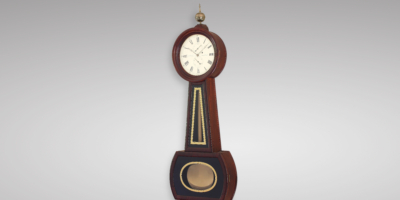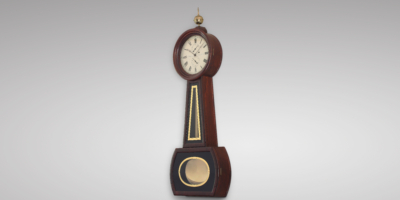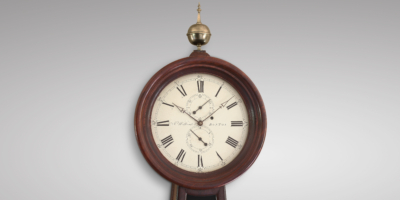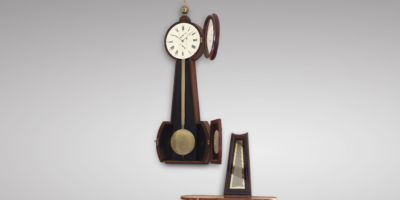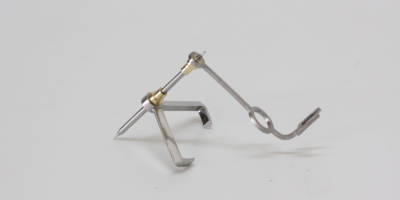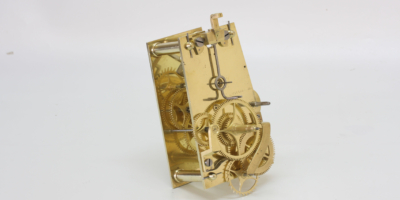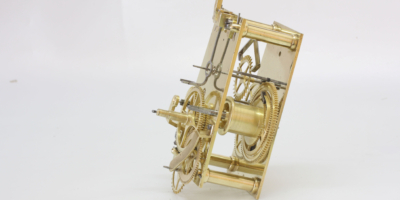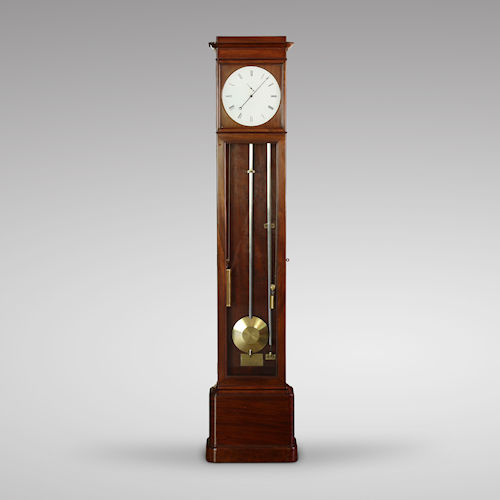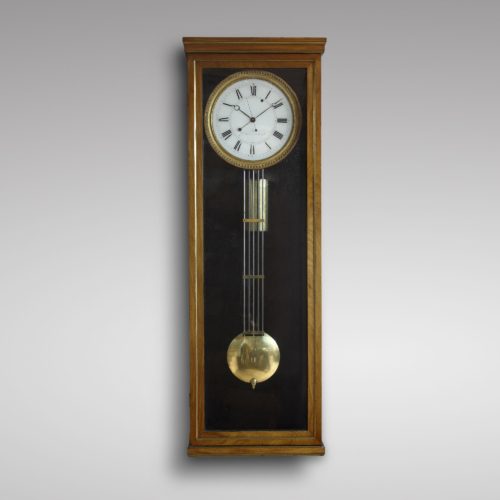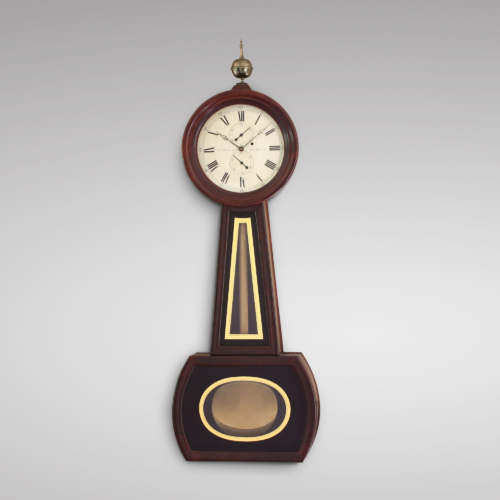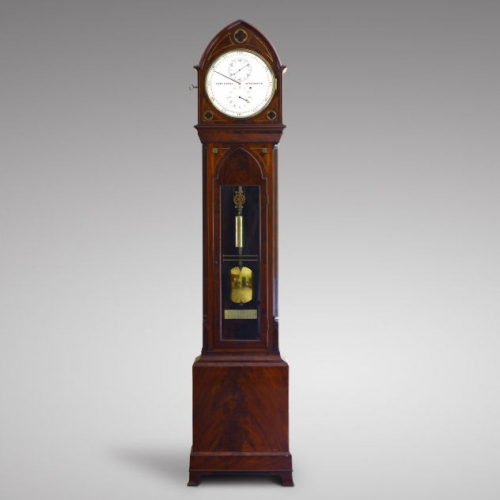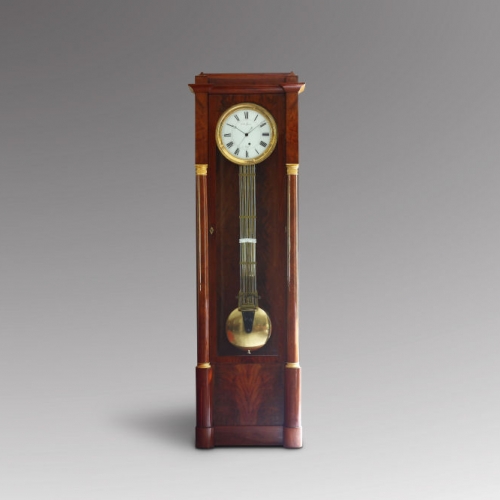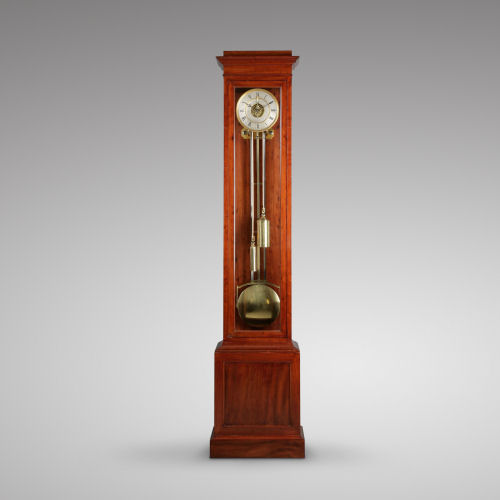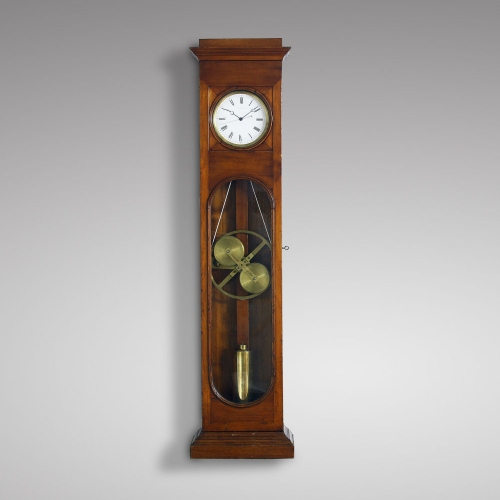Precision Wall Regulator by AARON WILLARD Jr, Boston. Circa 1830, signed on the dial and movement. Mahogany veneer case surmounted with a cast and turned brass steeple-top finial, solid mahogany hinged molded bezel, hinged bottom door and removable middle panel, the same key for both locks, original black and gold églomisé glasses.
Painted iron dial with signature at the centre, with Roman numerals for the hours and Arabic numerals for the 5 minutes increments, the upper subsidiary for the seconds and the lower for the 31-day calendar. Blued steel hands.
Truncated triangle brass movement plates with 4 turned pillars, maintaining power, the barrel with gutline, pulley and cast iron weight hidden behind a zinc panel inside the case, heavy turned brass and lead weighed pendulum bob suspended by a steel suspension and a pinewood rod, all pivot holes in the movement plate with fine turned edge, very finely machined pinions. Graham-type deadbeat escapement with exceptionally well made anchor. Autonomy 8 days.
Dimensions
Height 57” (142 cm), Width 19” (49 cm), Depth 6” (16 cm)
Aaron Willard Jr,
1783-1864, was apprenticed to his father Aaron Willard. Between 1804 and 1806 he was in partnership with his brother-in-law, Spencer Nolan, in the business of producing painted or decorated dials. Shortly thereafter, he took over his father’s business producing precision regulators and decorative clocks. He was the first to design the American-type “Lyre Clocks” and was the last to use mahogany “Banjo”-type cases, of which our clock is a perfect example. Production must have declined and stopped soon thereafter as the quality of églomisé glass became no longer available (circa 1840)
Bibliography
G.H. Baillie, Watchmakers and Clockmakers of the World, Methuen & Co London, 1929; Chris Bailey, Two Hundred Years of American Clocks and Watches, Prentice-Hall, 1975.
Price
€ 12.000

